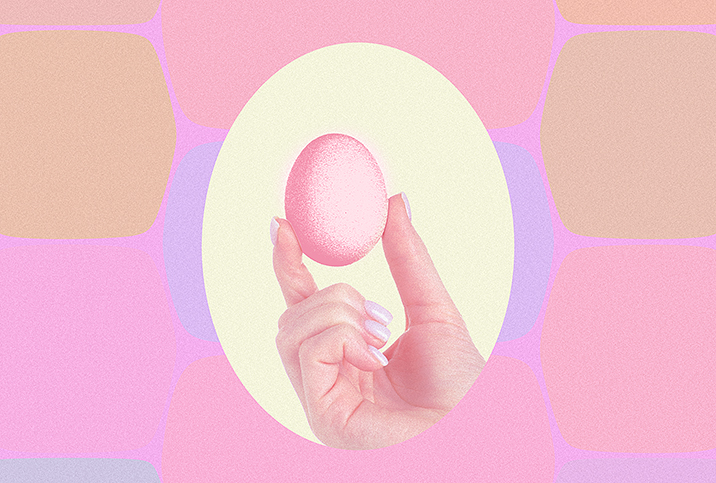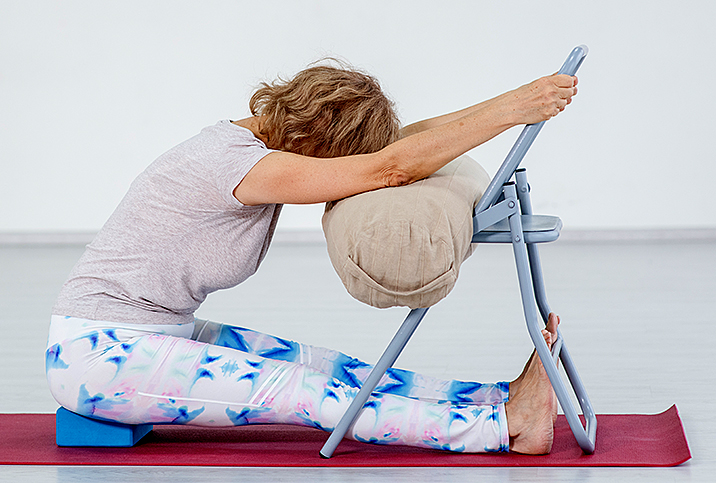What Is Vaginal Weightlifting and Is It Safe?

At first glance, lifting weights with your vagina may sound like a joke from a comedy skit, but the unconventional practice is not only legit, it's also getting a lot of traction online.
Your vagina is a muscle like any other in your body, making it capable of lifting weights. Vaginal weightlifting takes the already mainstream Kegel exercises to the next level, with the promise of improving your sex life and improving overall well-being.
Is there a downside to all of that? Well, let's explore what vaginal weightlifting is, how safe it is and the benefits you can experience from practicing it.
What is vaginal weightlifting?
As the name suggests, vaginal weightlifting is designed to train your pelvic floor muscles by inserting a small weight into your vagina and squeezing the weight to keep it in place. It's similar to Kegel exercises, where you use a clench-and-release technique to strengthen your pelvic floor muscles.
The pelvic floor muscles are located between your hips, and their strength and flexibility are closely connected to the health of your reproductive organs because they support the bowels, the bladder and the uterus.
Due to aging, weight gain, childbirth, inactivity or certain health conditions, the pelvic floor muscles can weaken. Vaginal weightlifting, when done progressively and in a controlled environment, can be an excellent way to regain strength.
Is it safe?
When done correctly, vaginal weightlifting is not only safe, but it can also bring you many positive benefits.
"It is typically performed by using a set of devices that increase in weight and placing them in the vagina. This causes the vaginal muscles to contract to keep the weight in place," said Stephanie Hack, M.D., M.P.H., a board-certified OB-GYN and a podcast host at Lady Parts Doctor in Rockville, Maryland.
One common risk with vaginal weightlifting is the chance for you to develop an irritation or infection. To reduce the chance, insert the weight with clean hands and clean the weight you have decided to use before and after.
The material of the weights can also influence the risk of infection.
"There is a risk of infection or irritation related to the device that is used. Only medical-grade pelvic weights should be used," Hack noted.
"I will also say that I like silicone Kegel weights better than jade eggs. Stone and crystals are porous and can increase the risk of infection," added Kim Vopni, known as the Vagina Coach, a restorative exercise specialist and certified personal trainer based in British Columbia, Canada. "They are also not always made with a string or tail attached for removal, which requires people to bear down to get it out, which can be damaging to the pelvic floor."
Another factor to remember is the subtle difference between making your muscles tighter and stronger over time. Just as with Kegel exercises, some people may be prone to vaginismus or high-tone pelvic floor dysfunction, where the pelvic floor muscles are constantly tight and unable to relax. If you fall into that group, using weights may exacerbate symptoms because the issue is not the lack of strength but the excessive tightness.
"Weightlifting, in this case, might be counterproductive," said Barb DePree, M.D., a gynecologist, women's healthcare provider and menopause care specialist in Douglas, Michigan, and member of the HealthyWomen Women's Health Advisory Council. "This is an example of engaging a pelvic floor physical therapist to do a complete assessment to guide a woman through the optimal training regimen."
Sometimes symptoms such as prolapse, incontinence and lack of sensation during intercourse come with excessive tightness, which is why learning to relax your muscles is so essential. When done optimally, vaginal weightlifting involves squeezing your muscles and getting tight, which promotes full relaxation.
The subtle difference between tightness and strength can be challenging for some people, which is why you can consult a pelvic floor specialist or therapist in case you have issues with tightness or suspect your form is incorrect during the exercises.
What are the benefits?
Doing vaginal weightlifting consistently with progressive overload can improve your health.
"The pelvic floor is critical in a number of functions for women: urination, defecation, comfort with intercourse, orgasmic response, pelvic organ support—uterus, vagina, rectum—and just overall day-to-day comfort in activities," DePree explained. "Keeping the pelvic floor muscles strong will help with these functions and may lessen the impact of time and gravity, among other things, which contribute to pelvic organ prolapse."
Pelvic organ prolapse occurs when an organ in the pelvis slips down from its normal position and bulges into the vagina.
Another benefit of vaginal weightlifting is the improvement you can experience while having sex. Stronger pelvic floor muscles and more blood flow can make you more easily aroused, increase sensitivity, make orgasms more intense and help you control contractions during penetration.
"Orgasm involves contraction of the pelvic floor muscles, and improved tone of these muscles will result in more sensation and pleasure with orgasm," DePree added.
Tight doesn't equal strong
"Vaginal weightlifting or Kegel weights can be a great option to help strengthen the pelvic floor muscles, but we need to ensure the person using them knows how to activate and relax their pelvic floor first," Vopni said. "Many people who are experiencing symptoms such as incontinence or prolapse or lack of sensation with sex believe their pelvic floor needs to be strengthened, and that may be true, but so often they equate strength with tight and believe Kegels and Kegel weights will help. But if they are prone to overactivity in the muscles or if they don't know how to do Kegels properly, then weights may make their symptoms worse.
"Tight doesn't equal strong," she added. "I always encourage people to invest in a pelvic floor physical therapist first and then let the physical therapist advise if a device or Kegel weights would be beneficial or not."
How to do it safely
Consistency and speaking with a practitioner are very important.
"Consistent toning is best, daily if able, and engaging with a pelvic floor physical therapist is the gold standard to learning how to properly train the pelvic floor. But there are also OTC [over-the-counter] devices and online educational guides that are helpful as well," DePree noted.
"Vaginal weightlifting is more than Kegels," she added. "Talk to your practitioner about your interest in improving pelvic floor strength, and combined with a thorough pelvic exam, they can help with outlining next steps toward success."


















